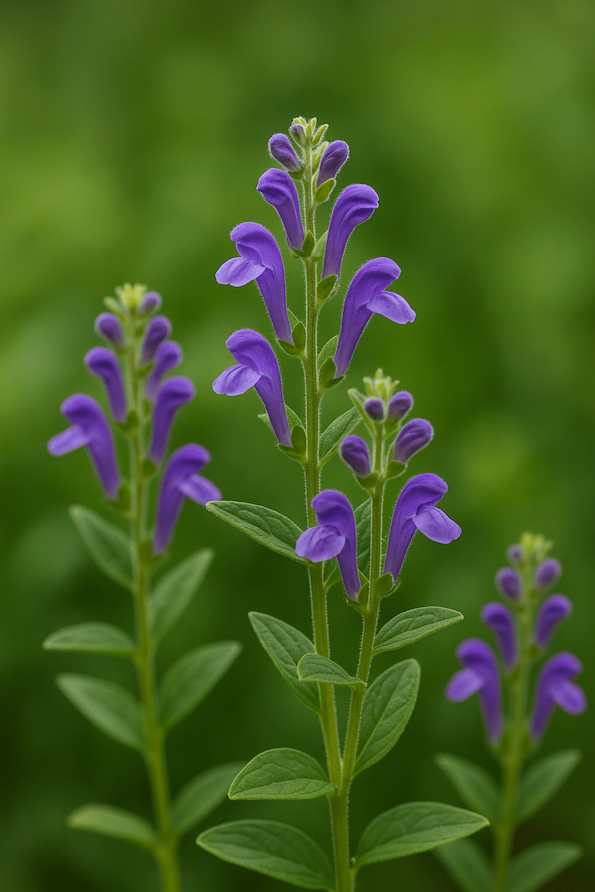
Lung Cancer Prognosis via Bioinformatics & Omics
Ancient herbal wisdom meets cutting-edge bioinformatics to develop new strategies for the prognosis and treatment of lung cancer? This is exactly what is happening in a new integrative study that looks closely at the molecular interplay between traditional Chinese medicine and modern omics data to better understand adenocarcinoma of the lung.
Bioinformatics meets imaging omics for better lung cancer prognosis
Data has long played a role in determining diagnosis and treatment. However, this field is developing rapidly and Shi Su and Lijun Yan from the Institute of Cell and Molecular Biology, School of Pharmacy, Harbin University of Commerce, have taken this as an opportunity to bring together modern computer tools and traditional Chinese medicine in their review article Bioinformatics and Imaging Omics: Lung Cancer Prognosis and Immunity Impact.
 The identified markers are anticipated to contribute to the subsequent clinical treatment of lung adenocarcinoma.
The identified markers are anticipated to contribute to the subsequent clinical treatment of lung adenocarcinoma.
In their article, published in the Journal of Radiation Research and Applied Sciences, they explore how multi-omics and imaging bioinformatics can improve our understanding of the molecular landscape of lung cancer and potentially revolutionize treatment in the long term.
At a glance
Study Focus: Integration of imaging omics and bioinformatics for lung cancer prognosis
Innovation: Use of traditional Chinese medicine (TCM) targets in a bioinformatics pipeline
Databases Used: TCGA, GEO, GTEx, TCMSP, STRING, and more
Tools Applied: R (limma, deseq2, glmnet), Cytoscape, Enrichr, GEPIA2
Core Findings: Identification of 5 key prognostic genes: CAV1, SPP1, PCNA, CCNB1, MMP1
Clinical Insight: These genes show strong correlation with prognosis and immune infiltration
Takeaway: A systems biology framework for precision medicine and immunotherapy in lung cancer
The science and the story
A modern lens on an age-old problem
Lung cancer is known to be extremely aggressive and heterogeneous, and this makes early detection and effective treatment very difficult. This study now proposes a solution based on both tradition and technology: the analysis of the active ingredients of Xiaobuhu soup (a classical TCM formula based on the medicinal plants Bupleurum and Scutellaria baicalensis) in combination with genomic and transcriptomic data from tumor samples.

Bioinformatics meets network pharmacology
The research team took a layered approach:
Extracted drug targets from herbal compounds using TCMSP (Traditional Chinese Medicine Systems Pharmacology Database)
Identified differentially expressed genes (DEGs) in lung cancer using TCGA (The Cancer Genome Atlas) and GEO (Gene Expression Omnibus)
Intersected drug targets with DEGs to pinpoint key genes
Built protein-protein interaction (PPI) networks, GO/KEGG enrichment, and diagnostic models using Cox regression and LASSO
The result? A holistic data landscape where herbs, genes, and patient outcomes intersect.
The five crucial genes
From this integrated network emerged five powerful predictors of lung cancer prognosis:
CAV1 – a scaffolding protein linked to tumor invasiveness
SPP1 – involved in immune cell signaling and tumor metastasis
PCNA – a marker of cell proliferation
CCNB1 – crucial for cell cycle regulation
MMP1 – enzyme associated with tissue remodeling and metastasis
These genes not only showed statistical relevance, but also correlated with the infiltration of immune cells. This in turn provided insights into the tumor microenvironment (TME).
The high expression of these genes was consistently linked with poor survival outcomes, suggesting they could serve both as biomarkers and therapeutic targets.
From bench to bedside: clinical relevance
Through Kaplan-Meier survival curves, ROC analysis, and immune cell profiling, the researchers demonstrated that these genes not only predict disease progression, but also reflect immune activity—a critical factor for immunotherapy response.
Further stratification by age, sex, tumor stage, and histopathology confirmed the diagnostic and prognostic power of the gene set.
Bonus insight: the TCM connection
By mapping active compounds like wogonin, baicalin, and quercetin to core cancer pathways, the study provided scientific justification for the anti-tumor efficacy of traditional formulas. And in doing so, it provided a data-based link between East and West.
A new kind of pipeline
This study is not just identifying genes or mapping signaling pathways, but rather rewriting the rules for their discovery. Traditional herbal compounds contain pharmacological knowledge, which is integrated here with molecular imaging and transcriptomic datasets. This creates a truly cross-disciplinary pipeline. A pipeline that is not only scalable and data-rich, but also flexible enough to combine centuries-old knowledge with state-of-the-art analytics.
Whether you're a computational biologist, clinician, or just fascinated by the potential of multi-omics, there's one thing we can certainly learn here:
This study is an example of what happens when we stop siloing science and start connecting the dots.